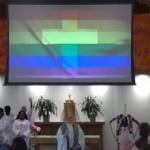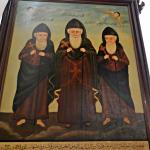Neil Postman, an American media theorist associated with New York University, wrote a passage that should be of significance to theologians of culture who live in hypertextuated cultures (we forget sometimes that in a digitised world saturated with images, the underpinning strata is always what the sociologist Manuel Castells calls a “hypertext”).
In his key work Amusing Ourselves to Death: Public Discourse in the Age of Showbusiness, Postman remarked that
To be confronted by…printed sentences is to look upon language bare, without the assistance of either beauty or community.
Though he was commenting on the arrival of print culture from the late 1600s onwards, Postman’s remark is indicative of an at-least-400-year-old cultural shift, in which physical bareness (whether in terms of buildings or even bodies) and atomisation are built into the logic of societies organised around textual forms such as email, sms, and even digitised images.
This does not mean that texts have to be jettisoned in order to save a culture. What is needed however is the recognition that texts are insufficient cultural forms on their own, and have to culminate in some embodied act. This raises the need for some kind of social organisation in which embodied practice as the culmination of the text must be a critical hinge of any cultural resistance to the atomisation or uglification that comes with either modernity or postmodernity.
If this is true, then only a liturgical outlook – for in the liturgy every action is but an enacting of a line of a biblical text – can sustain any revival of a truly organic, communal, and beautiful culture.











